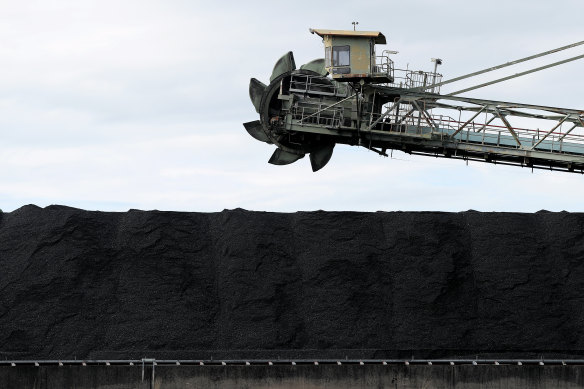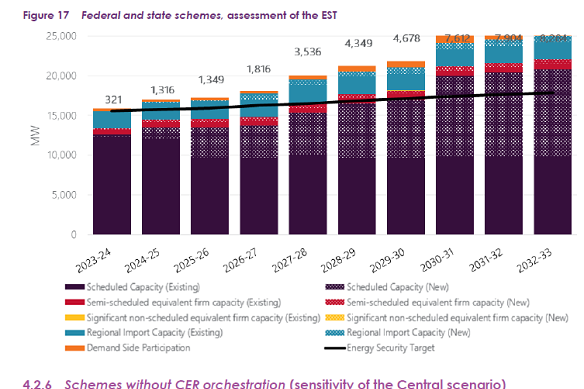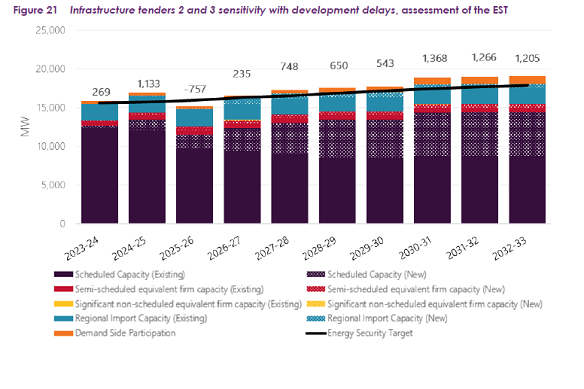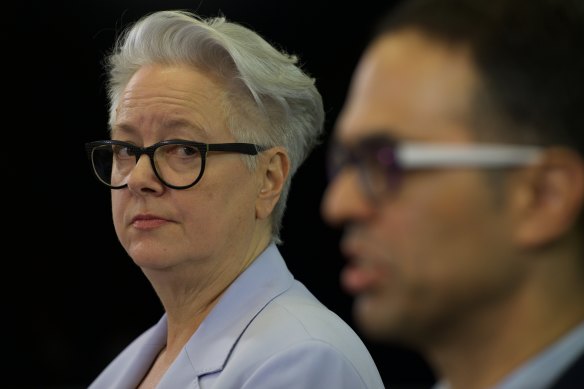By Max Maddison
The Minns government asked the electricity grid operator to undertake more conservative modelling which showed Eraring’s closure would create a reliability shortfall just months before giving the green light to extend the nation’s biggest coal-fired power station.
The controversial decision in late May to keep Eraring open for at least two extra years, costing taxpayers up to $450 million, was largely underpinned by government concerns that the state faced the risk of blackouts if Origin Energy moved ahead with the proposed August 2025 closure date.

Coal at the Eraring power station, which has had its life extended.Credit: Bloomberg
A briefing note signed by Energy Minister Penny Sharpe on December 7 last year claimed modelling in the Australian Energy Market Operator (AEMO)’s then-confidential October Energy Security Target Monitor (ESTM) report was “unrealistic”.
“All EST [Energy Security Target] breaches over the period are resolved in the most optimistic sensitivities modelled but we do not consider the underlying assumptions realistic,” the NSW Department of Climate Change, Energy, the Environment and Water (DCCEEW) briefing note stated.
“To ensure any proposed response is rightsized, the ESTM will be asked to include an additional sensitivity in the report based on what we consider to be more realistic assumptions.”
The departmental advice took issue with two of AEMO’s models. The first model included capacity from energy projects that had been announced by the federal and state governments but not sufficiently progressed to be included in a baseline scenario.

Modelling in AEMO’s Energy Security Target Monitor October report assuming all projects announced by the state and federal governments were online.Credit: AEMO
This included two private-sector tenders for firming infrastructure, generation and long-duration storage announced by the NSW government. The first of these was assumed to deliver 930 MW from 2025-26. Once these were factored in, AEMO forecast sufficient energy supply to meet demand when Eraring came offline.
Another model assuming delays to the delivery of the private market tenders showed no reliability gap, but with a slim margin for error.
The departmental briefing note, contained within a call for papers into Eraring’s extension, described the models as “unrealistic outlooks”, saying the assumption all projects would be delivered on time was “highly unlikely” and noted two AEMO reports which highlighted delays among clean energy projects were commonly observed.
“Forecast reliability risks in 2025-26 and 2026-27 are reduced if Eraring is extended by two years,” the note stated.

AEMO’s model after the Minns government’s requested changes shows a forecast lack of capacity in 2024-25.Credit: AEMO
The confidential version was provided to energy ministers in October, and the Minns government’s requested modelling was included in AEMO’s updated report when it was publicly released in December. Unlike the initial assessments, the departmental requested sensitivity showed a 757 MW supply shortfall in the NSW energy market in 2025-26.
A spokesman for Sharpe said AEMO’s modelling “does not address construction risk” and noted delays in commissioning clean energy projects had been observed in the report.
“As part of this process, the government considered a range of alternatives. These were not sufficient to address the reliability and price risks facing NSW,” he said, adding the government was looking “at every opportunity to accelerate delivery” of clean energy projects.
When Sharpe announced Eraring’s extension in May, she underlined AEMO’s 10-year forecast of the increased risk of blackouts as justification for the decision.
In response to the Herald’s questions, AEMO would confirm only that it received modelling requests from “time to time”.
Climate Energy Finance chief executive Tim Buckley questioned whether the investment necessary to defer Eraring’s retirement could have instead been used to encourage “a lot of permanent, low cost, zero emissions private projects”.
“Were alternative solutions actually even sought?” he said.
Stephanie Bashir, chief executive of clean energy consultant Nexa Advisory, accused the NSW government of having done “next to nothing” to accelerate the rollout of renewables, urging Sharpe to approve projects and cut red tape inhibiting uptake of rooftop solar and home batteries.
“If the NSW government was serious about addressing reliability and the cost of energy bills, they would be doing everything in their power to speed up the rollout of renewable projects. Not spend time reverse engineering decisions to extend ageing power stations,” she said.

NSW Environment and Energy Minister Penny Sharpe and NSW Treasurer Daniel Mookhey announcing the operating life of Eraring power station will be extended for two years in May.Credit: Nick Moir
Opposition energy spokesman James Griffin called on the government to release the full suite of documents relating to the extension of Eraring, saying the decision to request additional conservative modelling from AEMO was “highly unusual”.
“The request to AEMO conveniently helps the government reverse engineer a decision to keep Eraring open, regardless of the environmental impact or other factors. If that is the case then this whole decision-making process has been a shocking subversion of good public policy,” he said.
In May last year, Sharpe commissioned energy expert Cameron O’Reilly to review the state’s electricity supply. The “check-up” recommended Labor begin negotiations with Origin to extend the life of the Eraring.
Since the run-up to the state election in March last year, Premier Chris Minns had laid the groundwork for keeping Eraring open, floating the idea he would consider buying back the power station if Labor were elected, weeks before voters went to the poll.
The deal with Origin Energy was struck a year after O’Reilly was appointed. The government has entered a “risk-sharing” arrangement, with taxpayers to share in 20 per cent of the profits made by the power station over the lifetime of the agreement, capped at $40 million, but also underwriting 80 per cent of any losses, capped at $225 million.
Start the day with a summary of the day’s most important and interesting stories, analysis and insights. Sign up for our Morning Edition newsletter.